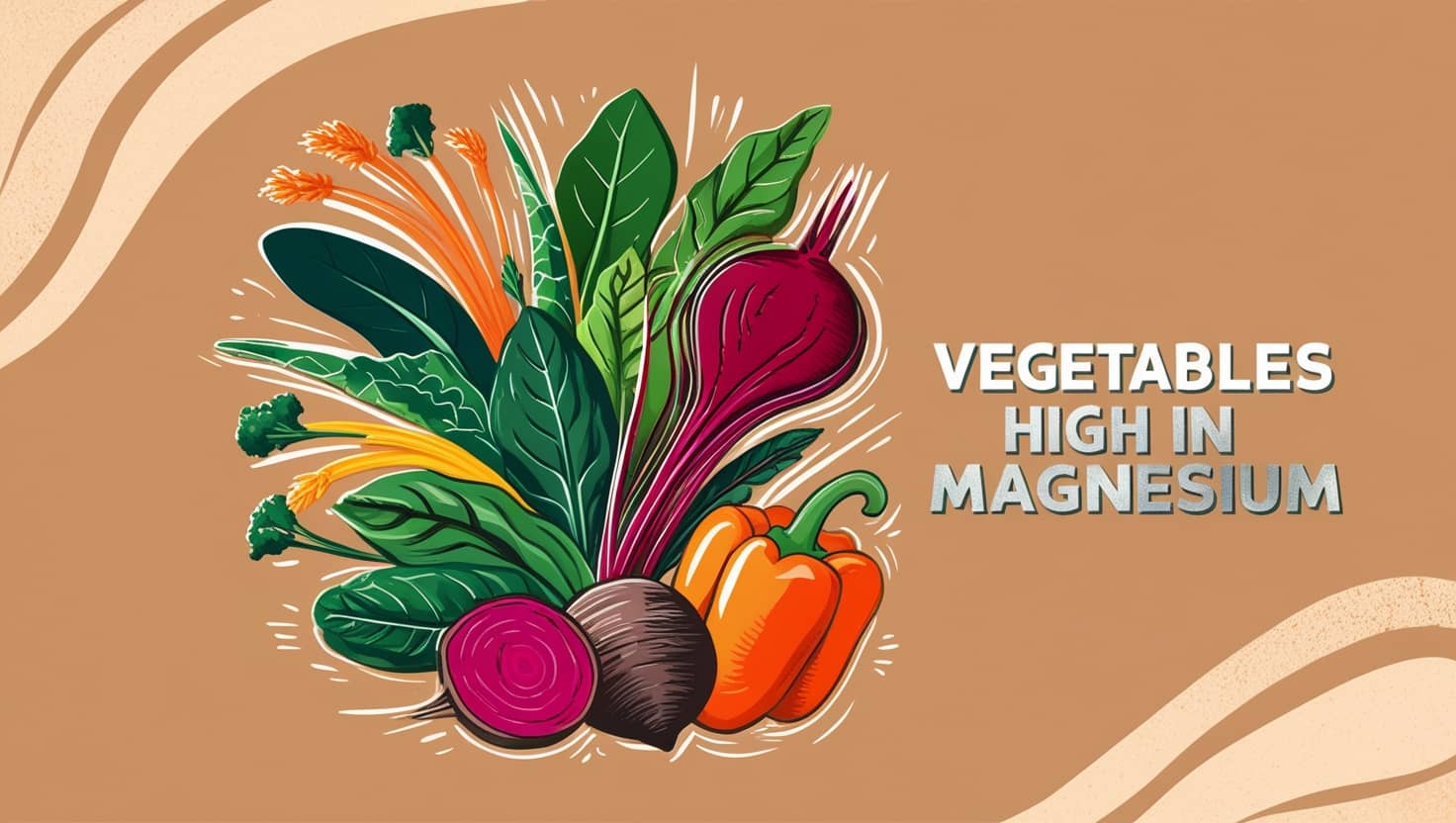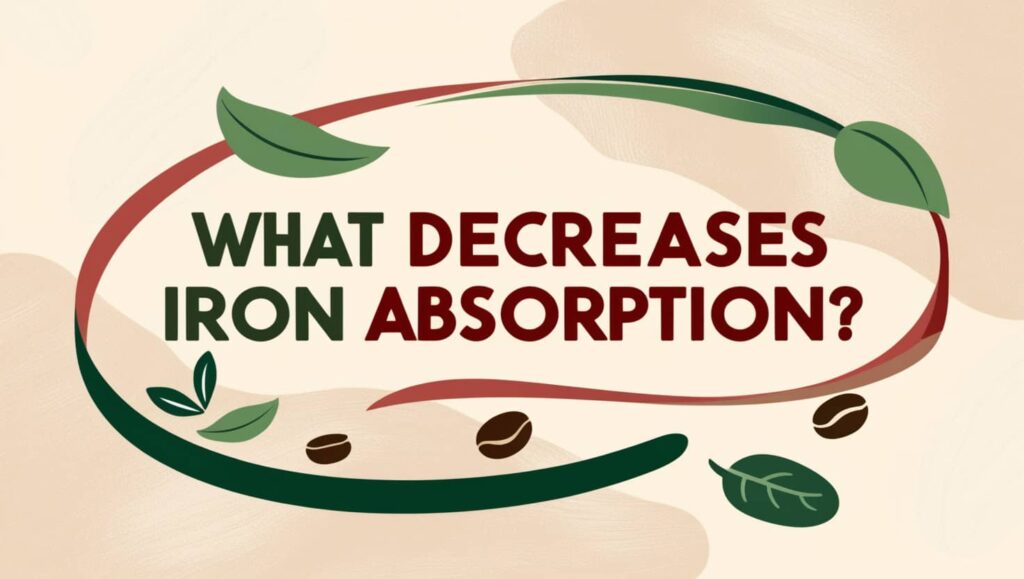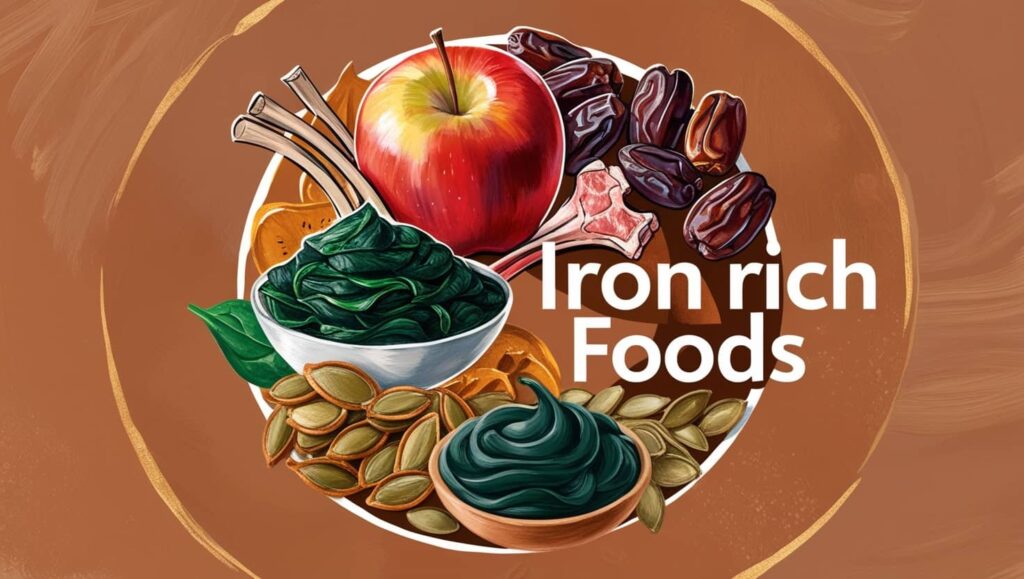Magnesium is extremely important for the health of the body as it is involved in completing approximately 300 vital processes, including controlling the heart rhythm, regulating muscle contraction, generating energy and protecting bone health.
However, most people cannot get their needs of this essential element in their daily diet, as experts recommend consuming 310 – 420 milligrams of magnesium daily.
Therefore, we describe a group of Vegetables High in Magnesium that can easily meet your daily needs of this element if you include it in your daily diet.
Top Magnesium-Rich Vegetables for a Healthy Diet
Leafy vegetables are one of the most important natural sources of magnesium, and they are also a rich source of many vitamins, minerals and nutrients that the body cannot do without.
These are some of the most important vegetables high in magnesium:
- Spinach: Spinach is one of the most important nutritious leafy vegetables, as it is rich in vitamins, minerals and antioxidants, and it is also an excellent source of magnesium, and one cup of cooked spinach can provide the body with about 37% of its daily needs of this element.
- Salaj: Swiss chard is also a leafy vegetable rich in magnesium, and it also provides the body with a good dose of vitamins A and C, in addition to fiber.
- Green turnip: A vegetable rich in magnesium, and it is also rich in calcium and vitamin K.
- Green cabbage: A vegetable rich in magnesium in addition to many other important elements such as potassium and phosphorus.
- Green mustard: A spicy vegetable rich in magnesium, and it is also rich in vitamins A and C, in addition to fiber.
- Green beans: One of the most popular vegetables around the world, they are a good source of magnesium, in addition to fiber and vitamins A and C.
- Broccoli: A cruciferous vegetable rich in nutrients, including magnesium, vitamin C and fiber.
- Peas: A good source of magnesium, protein and fiber.
- Okra: A unique plant that is a good source of magnesium, in addition to fiber and some vitamins.
Legumes can also give you high levels of magnesium, such as:
- Black beans
- Soybeans
- White beans
- Chickpeas
- Lentils
Although avocado is classified as a fruit, it cannot be overlooked when talking about plants rich in magnesium. (University of Rochester Medical Center, n.d.)
Benefits of Eating Magnesium-Loaded Vegetables Daily
Eating vegetables rich in magnesium improves your overall health and provides you with many of the nutrients that the body needs, and can provide you with the following benefits:
- Promoting heart health: Magnesium improves blood pressure levels, regulates the heart rate, and improves cholesterol levels in the blood.
- Protecting bone health: Magnesium is an essential element for normal bone structure, and plays a crucial role in bone formation and maintaining bone density, especially as we age.
- Boosts metabolism: Magnesium facilitates the digestion of fatty acids and proteins and regulates blood glucose levels.
- Sleep quality: Magnesium helps you get a deep, restful sleep by regulating certain neurotransmitters that calm the nervous system and allow the brain to transition to a resting state.
- Stress management: Magnesium helps reduce levels of the hormone cortisol, which the body produces when stressed. (National Institute of Health, n.d.)
Read Also: Benefits of Eating Kiwi at Night
Creative Ways to Add Magnesium-Rich Veggies to Your Meals
Here are some delicious ideas for adding vegetables high in magnesium to your diet:
- Add spinach to your smoothie: Spinach pairs well with other fruits and vegetables, so you can get a good dose of magnesium by adding a handful to your favorite smoothie recipe.
- Kale and Kohlrabi Salad: Kale and Kohlrabi are rich in magnesium, so you can season them with olive oil and lemon juice to make them even more delicious.
- Roast Brussels sprouts or broccoli: Roasting vegetables adds a great flavor, so you can roast Brussels sprouts or broccoli in olive oil and season with salt and pepper.
- Add soybeans to soups or stir-fries: Soybeans are rich in magnesium, so you can add them to soups, stir-fries, or salads.
- Avocado and spinach salsa: For the perfect magnesium-rich combination, you can make a salsa using avocado and spinach with some lemon juice and seasonings.
- Add black beans to tacos or burritos: Black beans are a great source of magnesium and protein. You can use them in tacos, burritos, or enchiladas.
- Add pumpkin seeds to oatmeal or yogurt: Pumpkin seeds are a good source of magnesium and other nutrients, and mixing them with oatmeal and nuts makes for a delicious and filling meal.
References
- National Institute of Health. (n.d.). Retrieved from Magnesium
- University of Rochester Medical Center. (n.d.). Retrieved from Magnesium-Rich Foods








